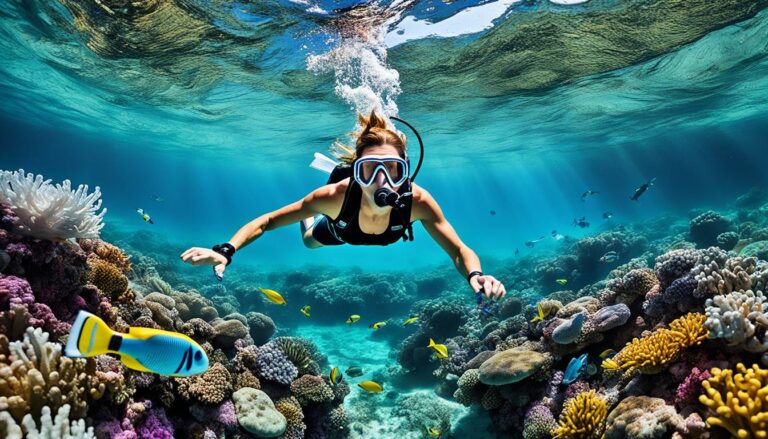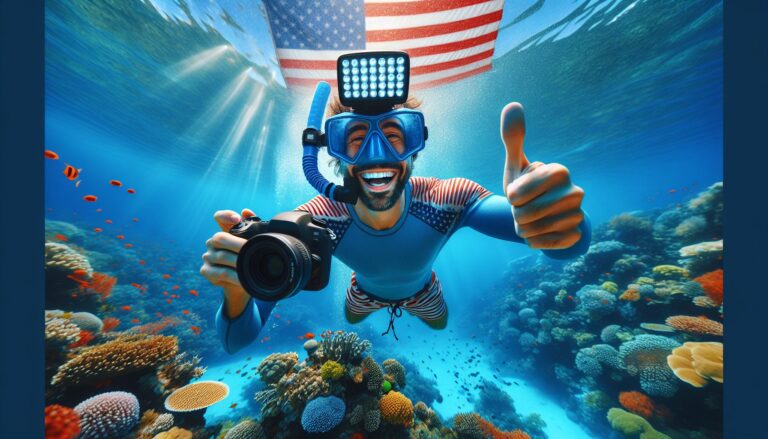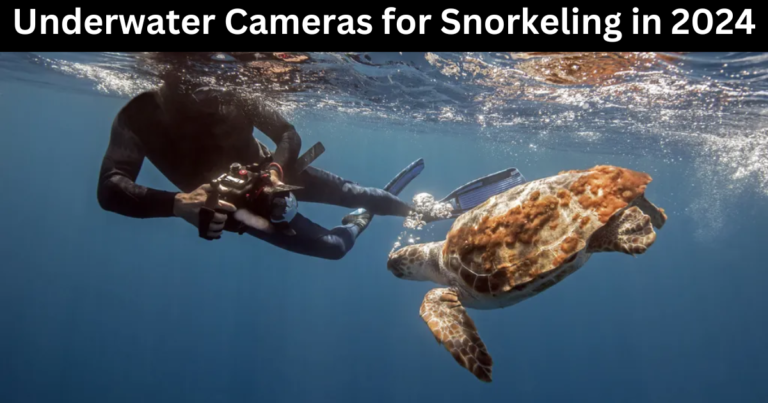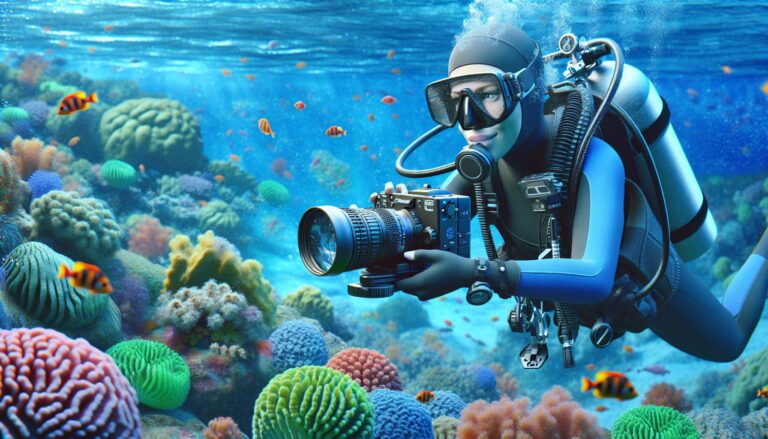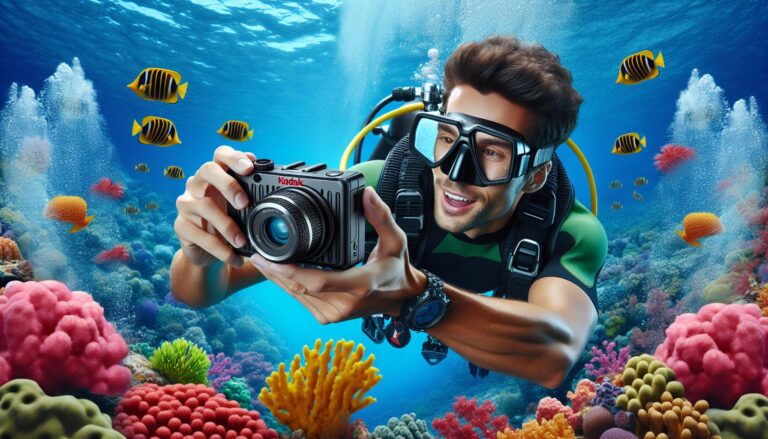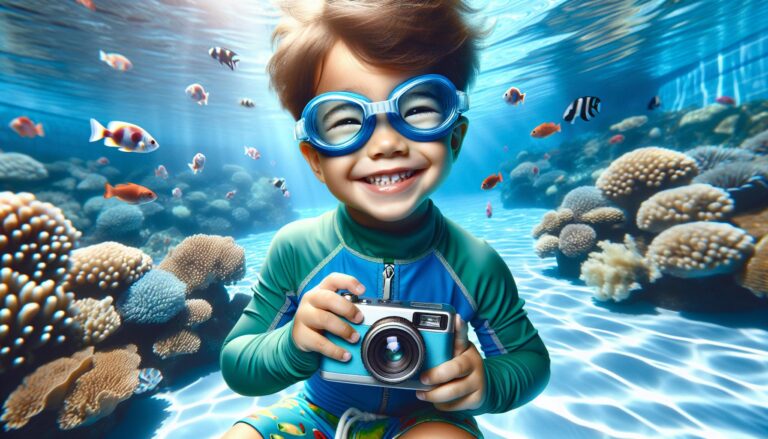Choosing the Best Underwater Camera for Snorkeling: A Comprehensive Guide
Ever plunged into the azure depths of the ocean, marveled at the vibrant marine life, and wished you could capture it all to share with the world? That’s where underwater cameras for snorkeling come in. They’re not just gadgets, they’re your ticket to a whole new world of aquatic adventure.
Understanding Underwater Photography
Mechanisms of underwater cameras differ significantly from their land-based peers, transforming the process of underwater photography into a unique genre in its own right. Navigation through these complex structures and working of underwater cameras helps significantly in capturing stunning imagery during underwater explorations.
Importance of a Good Underwater Camera
A quality underwater camera stands as a quintessential component for snorkeling enthusiasts and marine life photographers. It not only defines the resolution, color fidelity, and image stability but also determines how deep one can dive with the camera. For instance, premium underwater cameras afford up to 100 feet diving depth with maximum functionalities unaffected, enabling high clarity photos even at this extreme depth.
An underwater camera’s robustness is key in harsh marine conditions – a weak casing or a faulty seal could lead to water infiltrating the sensitive inner elements, bringing about disastrous outcomes like irreparable camera damage.
Apt decisions on choosing an underwater camera significantly influence the outcome of one’s underwater photo adventures. Therefore, investing in a good underwater camera counts as a necessary step in effectively capturing underwater beauty. After all, the sea doesn’t reveal its secrets easily – but with the right gear, you’re one step closer to unlocking them.
Key Features of a Snorkeling Underwater Camera
Navigating the fascinating features of a snorkeling underwater camera can be a voyage of discovery. Let’s delve into the standout characteristics these aquatic implements possess.
Depth Rating and Pressure Resistance
An important aspect to consider in a snorkeling underwater camera is the device’s depth rating and pressure resistance. For example, as an underwater photographer, I find cameras with a depth rating of at least 30 meters (98 feet) suitable for snorkeling. The greater the depth capacity, the deeper one can dive with the camera, expanding the range of aquatic life one can explore. Pressure resistance becomes crucial the deeper you go, ensuring the camera’s survival and functionality in high-pressure underwater environments.
Picture Quality and Resolution
Another key feature is the device’s picture quality and resolution. High-resolution devices, such as those offering up to 20 megapixels, often deliver vivid, detailed underwater shots. Using image sensors, like CMOS or CCD, is an integral part of achieving high-resolution, quality pictures. Remember, crisp, high-quality underwater pictures largely depend on the resolution and the advanced image processing features the camera is outfitted with.
Durability and Build
The durability and build quality of the device are important factors too. Ensuring the camera is built with enduring, waterproof materials like polycarbonate resin or marine grade stainless steel, guarantee, for instance, that I can capture my underwater adventures without worrying about the harsh elements damaging the camera. Furthermore, the better the build quality, the longer the camera lasts and the more resistant it is to inevitable bumps and scrapes during dives.
Top Underwater Cameras for Snorkeling
Whether you’re an occasional snorkeler or a professional marine photographer, the right underwater camera can vastly enhance your underwater escapades. Let’s delve into the distinction between compact, DSLR, and mirrorless cameras for snorkeling.
Compact Cameras vs DSLR Underwater Cameras
In the market for underwater cameras for snorkeling, compacts and DSLRs embody two contrasting ends of the spectrum. Compact cameras, as their name implies, offer portability and ease of use. Typically, they boast depth ratings of up to 15 meters, making them a prime choice for snorkelers. Examples include the Olympus TG-6 and the SeaLife Micro 3.0, renowned for their rugged construction and high-quality imagery.
In contrast, DSLRs offer superior quality of capture – ideal for professional marine photographers. However, their bulkiness can act an impediment in freestyle snorkeling. Nikon’s D850, when used with a dedicated underwater housing, or the Canon EOS 5D Mark IV, are testaments to high-quality DSLR cameras that fare well underwater.
Mirrorless Cameras for Snorkeling
Mirrorless cameras for snorkeling present a middle ground, amalgamating the portability of compact cameras and the high image quality of DSLRs. They convey incredible sharpness and color reproduction within a relatively light and compact frame, a feature indispensable for snorkelers intent on quick, freestyle movements. Famed models include the Sony Alpha a7R III and the Olympus OM-D E-M5 Mark II, both offering an excellent balance of compactness and performance for underwater photography.
How to Choose an Underwater Camera for Snorkeling
Choosing an underwater camera for snorkeling requires thoughtful consideration. Let’s delve into factors that guide this choice, including your snorkeling experience and budget constraints.
Considerations Based on Your Snorkeling Experience
Your snorkeling experience plays a crucial role in determining the type of underwater camera to choose. For beginner snorkelers, compact cameras provide an easy-to-use option, sporting features like automatic modes, depth ratings up to 15 meters, and built-in flash, ideal for capturing underwater marvels. Specific models, such as the Olympus TG-6 or the SeaLife Micro 3.0, offer reliable performance and portability, perfect for freestyle snorkeling.
Alternatively, for seasoned snorkelers, DSLR or mirrorless cameras deliver high-definition imagery and greater control over shooting parameters. The Nikon D850 or the Canon EOS 5D Mark IV exemplify DSLR models that serve well in challenging photographic conditions, albeit bulkier than compact counterparts. Mirrorless options like the Sony Alpha a7R III or the Olympus OM-D E-M5 Mark II, however, meld professional-grade picture quality and lightweight design into a single package— an optimal choice for snorkelers seeking both mobility and image sharpness.
Your Budget and Cost-effectiveness
The budget forms another determinant in the buying decision. Compact cameras tend to be more pocket-friendly, making them suitable for casual snorkelers or those on a budget. As an example, the Olympus TG-6 falls in the mid-low price range, offering a cost-effective, quality shooting experience in aquatic environments.
On the other end of the spectrum, professional-grade DSLR and mirrorless cameras carry high price tags owing to their robust features and superior image quality. For instance, the Nikon D850 and Sony Alpha a7R III cater to high-end photography, requiring sizeable investments.
Yet, affordability doesn’t necessarily imply compromise on performance. Mirrorless cameras, like the Olympus OM-D E-M5 Mark II, present a middle ground. They deliver excellent image fidelity in a compact, more affordable package compared to premium DSLR models, elucidating their cost-effectiveness for enthusiastic snorkelers.
Ultimately, the choice rests on a balance between financial constraints and desired photographic outcomes. Consider these factors critically when choosing an underwater camera for snorkeling to yield the most rewarding underwater photography experience.
Taking Care of Your Underwater Camera
As we’ve already explored the various types of underwater cameras and factors to consider when purchasing one, let’s shift our focus to the maintenance and care of these devices. After all, they’re investments that need safeguarding to ensure they continue to capture impressive underwater moments.
- Rinse after use: Rinse your camera thoroughly with fresh water after every snorkeling session. It rids the device of salt, beach sand, and other debris. Nikon, for instance, advises that D850 DSLR availability won’t be adversely impacted by the salt water if it’s properly rinsed after use.
- Protect from extreme temperature: Store your underwater camera in cool places, away from direct sunlight. High temperatures can damage the camera’s parts, just as low temperatures can. The Sony Alpha a7R III manual advises against exposing the camera to temperatures above 40°C or below -5°C.
- Keep it padded: During transportation, ensure your camera is in a padded bag to absorb any shock. For instance, Olympus offers a variety of cushioned carrying cases designed specifically for the TG-6 compact camera.
- Regular inspection: Examine the seals and buttons on your camera before every use. If they’re damaged, the Olympus TG-6, Nikon D850, and Sony Alpha a7R III all have repair services you can utilize.
- Dry before storing: Always make certain your camera is completely dry before storing. This prevents condensation, which could lead to internal damage.
By following these straightforward maintenance tips, you can prolong the lifespan of your underwater camera, ensuring it stays functional and effective for numerous snorkeling adventures.
Conclusion
So there you have it. Choosing the right underwater camera for snorkeling doesn’t have to be a daunting task. It’s all about understanding your needs, skill level, and budget. Remember, a high price tag doesn’t always mean better quality. It’s also crucial to take good care of your camera to ensure it lasts for many snorkeling adventures. From rinsing after use to regular inspection of seals and buttons, these simple maintenance steps can go a long way. After all, the longevity of your camera is as important as the quality of pictures it captures. Here’s to capturing stunning underwater shots on your next snorkeling adventure!


